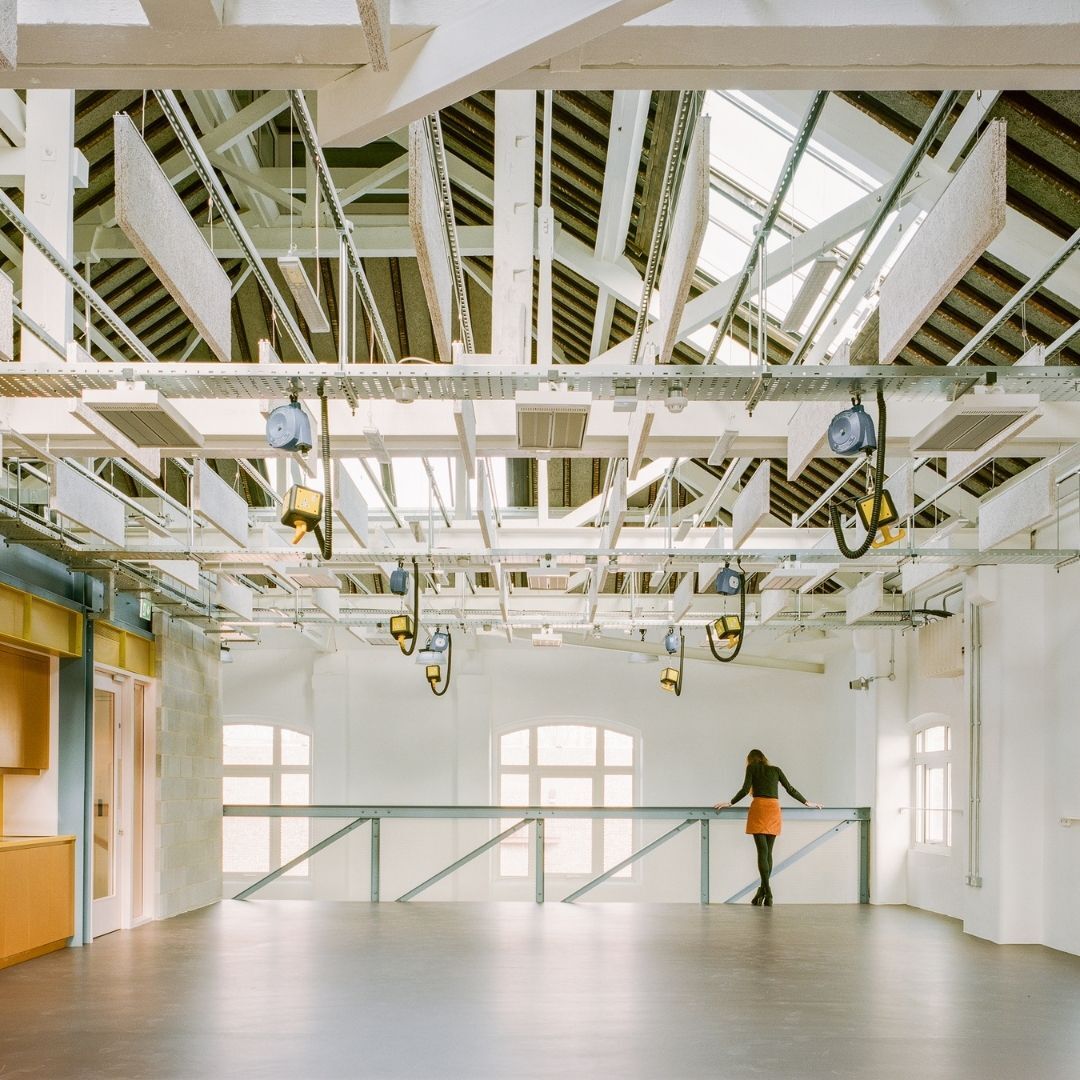Project showcase
3 Mills Studios, London Borough of Newham, for London Legacy Development Corporation, with Gort Scott and Freehaus

Located on the bank of the River Lea, 3 Mills Studios is the city’s oldest surviving industrial centre and has been a hub for TV and film since the 1980s. The retrofit project has created over 900sqm of new workspace for production teams through the adaptive and creative reuse of three key buildings: The Gin Still, the Grade-II listed Custom House and the Rush House. The improvement of flood resilience measures hopes to ensure the long-term preservation of this heritage site.
Who is on the project team? (designer, consultants, etc)
Architect Gort Scott with Freehaus
Lead designer Gort Scott
Structural engineer Momentum
Services engineer OR Consulting Engineers
Main contractor Gilbert Ash
Project manager Knight Frank
Project and Building Consultancy
Quantity surveyor Appleyard & Trew LLP
Principal designer Knight Frank Project and Building Consultancy
Describe the context of this project, its neighbourhood and people.
This project encourages the establishment of new business and employment opportunities onto the 3 Mills Studios site and the Bromley-by-Bow area, continuing the growth of film, TV and related industries in east London and contributing to the wider regeneration of the area. The Three Mills site, on the banks of the River Lea, is a unique remnant of historic London and is the city’s oldest surviving industrial centre. The site became a dedicated centre for film and TV production in the 1980s and today provides nine sound stages, eleven rehearsal spaces and over 75,000 sq.ft of filming space. The site, which has been owned by LLDC since 2010, still comprises a series of listed and locally listed buildings. The Three Mills project encompasses the adaptive and creative reuse of three key buildings: the locally listed Gin Still, the Grade II listed Custom House and the Rush House. The project brings disused or under-used buildings back into use as new lettable spaces for creative businesses, and greatly improves the environmental sustainability, climate resilience and economic viability of these important heritage assets. The project expands capacity at Three Mills through the creation of new spaces to promote creativity and support new businesses and employment opportunities. The project has created over 900 square metres of new workspaces for production teams at 3 Mills Studios. Thanks to funding from LLDC, the Mayor of London and the UK Government, the project represents a significant investment in east London’s growing TV and film industry.
How does this project make use of an existing structure, place or building in a creative way? Is it innovative? How will this project continue to evolve or enable future flexibility and adaptation? Have you considered its resilience?
The projects were designed with a design life in excess of 100 years, recognising the historic nature of the heritage assets involved and the need for their long-term preservation. Reducing carbon emissions and energy usage were also critical considerations. In conjunction with the structural engineers, an assessment of embodied carbon was carried out at the design stage. In relation to the Gin Still (refer to image), this assessment suggested that a hybrid structure of steel and timber would provide the lowest carbon solution. Due to the restricted budget, new works were also necessarily strategic, ensuring that any new elements were employed efficiently and where they would have the most impact, minimising the use of material resources. Collaborating with the building contractors, we also made sure that materials arising from demolitions were recycled wherever feasible. This involved reusing these materials in new elements of construction, as well as intentionally utilising existing structures whenever possible to avoid unnecessary demolitions. A long-life loose fit approach was also a key element of the design. The new floors within the Gin Still effectively triple the amount of usable space and are designed to provide flexible workspace which will support a range of layouts, as well as different capacities and uses, maximising flexibility for future potential uses. New servicing infrastructure, sensitively integrated into the historic fabric of the Custom House, has also been designed to support a variety of different configurations and uses over time.
What is the environmental impact of the project? How will the carbon use and material impact of the development be mitigated? What is the sustainability strategy?
The projects have been designed to minimise energy usage. As well as thermal upgrades, the designs employ passive ventilation techniques which restore historic ventilation patterns. In the Gin Still this involved the restoration of a ridge ventilator and fitting this with automatic vents, as well as openable roof-lights, providing ‘stack-effect’ natural ventilation. Electrically operated, zoned radiant heating panels also allow for different occupancy patterns and flexibility in relation to heating demands, thus reducing overall energy usage. At the Custom House (refer to image), the focus was improving the climate resilience of a significant heritage asset by employing flood resilience measures that have stopped the flooding and damp issues which plagued the building for many years, whilst anticipating the impacts of future flooding events. The restoration of historic windows and shutters, combined with secondary glazing, has revitalised the natural ventilation system and enhanced thermal and acoustic performance. • The Gin Still - 99 kWh/m2/yr. • The Custom House - 111 kWh/m2/yr. The Screening Room is a small part of a larger existing building that was outside of the project brief, and therefore energy usage here forms a part of a wider energy demand. The newly established space on the Three Mills site has already facilitated a new production, which has resulted in the creation of job opportunities and the development of specialised skills in the creative sectors, within the local community.
Early bird deadline
10 October 2024
Final entry deadline
28 November 2024
Festival of Pineapples
25-27 February
Pineapples prize giving night
March
Pineapples at Festival of Place
2 July
© The Pineapples - Tweak Ltd. 124 City Road, London, EC1V 2NX. Tel: 020 3326 7238
